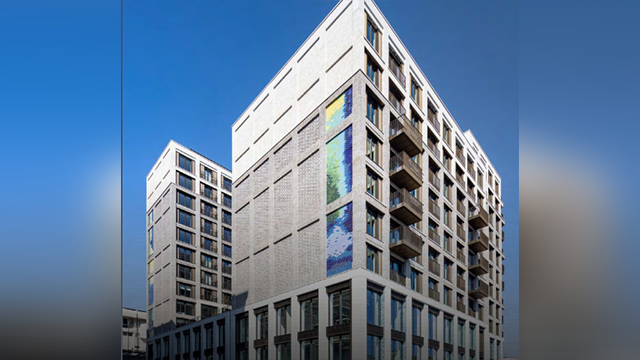Commonhold: the third way
T h e UK is one of the only countries in the world that has a leasehold and freehold structure of ownership of property. In a block of flats, the freehold owner will commonly be the landlord of the lessees in the building and will usually retain ownership of the structural and common parts of the building. Flat leases are granted which usually demise to the tenants the surfaces of the floors, ceilings and walls of the flat and everything in between that is non-structural. The leases are also for a fixed period of time, which means that they are a depreciating asset and, unless they are granted for a term of 999 years, will usually need to be extended at some point, for which the lessee will have to pay a premium. A ground rent is also usually payable to the landlord.
This system is centuries old and has resulted in considerable case law, which assists in the interpretation of the legislation that governs the relationship between landlords and tenants and also the leases themselves. It is a well tried and tested structure, but in 2003 the Commonhold and Leasehold Reform Act 2002 introduced a new way of owning flats in a building called commonhold.
How does commonhold work? In a commonhold building, the apartment owner owns the freehold of their apartment and the flat is referred to as a unit. There is, therefore, no landlord or tenant but all the unit owners will be the freehold owners of their apartments. A commonhold association is set up that will own the freehold of the common parts of the building and which will run and manage the building. The CA is a company limited by guarantee and all the unit owners are members. Some will also be the directors.
The UK is one of the only countries in the world that has a leasehold and freehold structure of ownership of property. In a block of flats, the freehold owner will commonly be the landlord of the lessees in the building and will usually retain ownership of the structural and common parts of the building. Flat leases are granted which usually demise to the tenants the surfaces of the floors, ceilings and walls of the flat and everything in between that is non-structural. The leases are also for a fixed period of time, which means that they are a depreciating asset and, unless they are granted for a term of 999 years, will usually need to be extended at some point, for which the lessee will have to pay a premium. A ground rent is also usually payable to the landlord.
This system is centuries old and has resulted in considerable case law, which assists in the interpretation of the legislation that governs the relationship between landlords and tenants and also the leases themselves. It is a well tried and tested structure, but in 2003 the Commonhold and Leasehold Reform Act 2002 introduced a new way of owning flats in a building called commonhold.
How does commonhold work?
In a commonhold building, the apartment owner owns the freehold of their apartment and the flat is referred to as a unit. There is, therefore, no landlord or tenant but all the unit owners will be the freehold owners of their apartments. A commonhold association is set up that will own the freehold of the common parts of the building and which will run and manage the building. The CA is a company limited by guarantee and all the unit owners are members. Some will also be the directors.
There is also a commonhold community statement, which is the document that sets out the rules and regulations for the unit owners and the CA – similar to a lease. The unit owners are required to contribute to the cost of the repair and maintenance of the building and the CA is required to arrange for the repair, maintenance, management and insurance of the building.
Government proposals
Lessees of flats currently have the ability to convert to commonhold, but it is thought there are fewer than 20 buildings currently owned using this structure. The government wants to make commonhold the preferred way of property ownership and there are now proposals to try to make commonhold ownership the preferred way of owning flats. Why is the government so keen to replace the way in which flats are owned? What are the incentives to make lessees want to convert their building to commonhold?
The government proposal suggests that commonhold is a preferable way of owning flats as the unit owners will own their flat forever. There is no lease which is getting shorter by the day, there is no landlord, there is no requirement to pay ground rent, there is no forfeiture, there is standardisation by way of the CCS, there is flexibility to change that statement and it simplifies management and provides bespoke legislation. The government is, however, going to need lessees to want to buy into this new method of ownership if commonhold is to be the preferred method of ownership going forward.
In order for tenants to want to convert to commonhold they will want to be sure that they are in a better position under commonhold than they are under the leasehold structure. The government is therefore seeking to address some of the problems with commonhold as it currently exists.
Forfeiture
In leasehold ownership, landlords will nearly always have the ability to forfeit leases in the event of a breach of the tenants’ obligations in the lease. Forfeiture is an important mechanism for landlords as it allows them to enforce the terms of the leases on the lessee, in particular their obligation to pay the service charge, ie their share of the costs of the repair and maintenance of the building. If lessees do not pay the service charge, then the building could fall into disrepair, which would devalue both the landlord’s and the lessees’ interest in it.
At the moment there is no similar method of forfeiture under the commonhold system but under the new proposals there is to be a method of enforcement of the terms of the CCS to ensure that all of the unit owners pay their share of the maintenance of the building. The new proposal is that there will be a power for the CA to apply to court for the sale of a defaulting owner’s unit in order to recover any arrears.
A distinction from forfeiture here is that the CA, after settling any arrears and paying any secured creditors from the proceeds of sale, will then pay the balance of the proceeds to the unit owner. It is suggested that the court would only order the sale where reasonably proportionate to do so in all circumstances. This will give unit owners the comfort of knowing that there is a way to make sure all unit owners pay their share.
Conversion
Another problem with commonhold is that, at the moment, all leaseholders in a building need to consent to the conversion to commonhold. However, the new proposal is that a building will only require a simple majority of the leaseholders in order to convert a building to commonhold and there will be a process which leaseholders must follow in order to convert their building.
Also, where a building is converted to commonhold there will be a premium payable to the freeholder. There is therefore the problem as to how the premium is funded if not everyone consents to the conversion of the building as there will be a shortfall in the premium payable by the non-consenting leaseholders. The proposal is, therefore, for there to be government-backed loans to pay for the non-consenting leaseholders’ share of the premium, which will be repayable on the sale of the unit. If this is not feasible however, the recommendation is that the non-consenting leaseholders retain their leases and do not become freehold owners of their unit. This would create a mixture of commonhold and leasehold in some buildings, but with some method of phasing out the remaining leasehold interests to ensure that at some point all the leases are converted to commonhold. This mixture of tenures will also be available to buildings which contain shared ownership leases, as it is proposed that shared ownership leases will still be able to exist within the commonhold structure.
Lenders
Another obstacle to overcome is that lenders will need to be willing to lend on commonhold units instead of leasehold flats and the proposal is that if a building converts to a commonhold structure, the lender’s security will attach automatically to the new commonhold unit. The suggestion is that this is better security for lenders than leases as they have a charge over a freehold interest and there is no risk of forfeiture. However, most mortgages are granted for a short term which usually expires long before the lease term does and, while forfeiture will no longer apply in commonhold, as mentioned above, the CA will have the ability to repossess the unit and sell it under the commonhold regime.
Flexibility
At the moment, commonhold can be too restrictive in terms of the rights and obligations permitted in the CCS and this means it does not give complex buildings or new developments the flexibility that is needed. It is therefore proposed that there will be greater flexibility in the CCS. There will be a prescribed set of rules which applies to all unit owners and which will be prescribed by legislation and another bespoke set of rules which are specific to buildings and developments. For example, it is proposed that developers of new developments will have the ability of phasing in commonhold as buildings in a particular phase are complete, to allow developers to retain sufficient control over the rest of the development site while construction continues.
Will it work?
There are many other proposals which seek to overcome perceived problems with the existing commonhold structure to try to make it more workable and appealing to all lessees. However, whether it is enough to make leasehold ownership a thing of the past remains to be seen. Commonhold will not bring an end to property disputes in buildings, either between unit owners or between unit holders and the CA. It won’t bring complete standardisation or simplicity in management in all cases either as there could be some buildings with a mixture of commonhold ownership, leasehold ownership, shared ownership leases, a prescribed CCS and a bespoke CCS.
What commonhold does do is bring an end to third-party landlords owning freeholds of buildings. Lessees, however, in a leasehold structure already have the ability to remove third-party landlords by way of exercising their right to collectively enfranchise their buildings and buy the freehold of it, pursuant to the Leasehold Reform Housing and Urban Development Act 1993, subject to their building satisfying certain qualifying criteria. The freehold is then owned by a tenant-owned company.
Commonhold also brings an end to ground rents and depreciating lease terms and the need for lessees to pay to extend their lease terms. However, the proposed leasehold reforms arguably achieve the same thing, as lessees, which it is proposed, will be given the right to extend their leases to 990 years at a peppercorn rent. Therefore, the main reason that lessees will want to convert to commonhold is the premise that they want to know they own the whole freehold of their flat.
Lucy Barber is a partner and head of residential property at Forsters
The government made its leasehold announcement on 7 January. The details can be found here
Picture © Shutterstock











